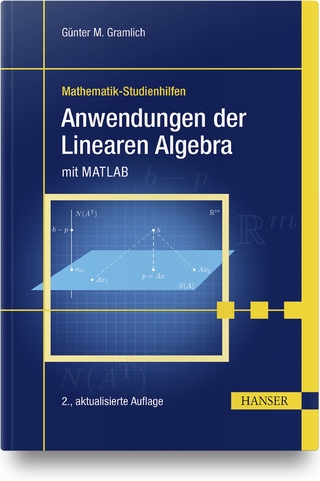
Intermediate Algebra
Pearson (Verlag)
978-0-201-72919-1 (ISBN)
- Titel erscheint in neuer Auflage
- Artikel merken
The authors' writing style is extremely student-friendly. They talk to students in their own language and walk them through the concepts, explaining not only how to do the math, but also why it works and where it comes from, rather than using the "monkey-see, monkey-do" approach that some books take.
(Each Chapter concludes with a "Summary", "Review Exercises", "Practice Test", and "Cumulative Review Exercises", except for Chapter 1.)
1. Real Numbers and Expressions.
Sets and the Structure of Algebra.
Operations with Real Numbers; Properties of Real Numbers.
Exponents, Roots, and Order of Operations.
Evaluating and Rewriting Expressions.
2. Linear Equations and Inequalities in One Variable.
Linear Equations and Formulas.
Solving Problems.
Solving Linear Inequalities.
Compound Inequalities.
Equations Involving Absolute Value.
Inequalities Involving Absolute Value.
3. Equations and Inequalities in Two Variables.
Graphing Linear Equations.
The Slope of a Line.
The Equation of a Line.
Graphing Linear Inequalities.
Introduction to Functions and Function Notation.
4. Solving Systems of Linear Equations.
Systems of Linear Equations in Two Variables.
Systems of Linear Equations in Three Variables.
Solving Applications Using Systems of Equations.
Solving Systems of Linear Equations using Matrices.
Cramer's Rule.
Systems of Linear Inequalities.
5. Polynomials.
Exponents and Scientific Notation.
Polynomials and Polynomial Functions.
Multiplying Polynomials.
Dividing Polynomials.
Synthetic Division.
6. Factoring.
Greatest Common Factor and Factoring by Grouping.
Factoring Trinomials.
Factoring Special Products and Factoring Strategies.
Solving Equations by Factoring.
7. Rational Expressions.
Simplifying, Multiplying and Dividing Rational Expressions.
Adding and Subtracting Rational Expressions.
Simplifying Complex Fractions.
Solving Equations Containing Rational Expressions.
Applications with Rational Expressions; Variation.
8. Rational Exponents, Radicals, and Complex Numbers.
Radical Expressions and Functions.
Rational Exponents.
Multiplying, dividing, and Simplifying Radical Expressions.
Adding, Subtracting, and Multiplying Radical Expressions.
Rationalizing Numerators and Denominators of Radical Expressions.
Radical Equations and Problem Solving.
Complex Numbers.
9. Quadratic Equations and Functions.
Completing the Square.
Solving Quadratic Equations Using the Quadratic Formula.
Solving Equations in Quadratic Form.
Graphing Quadratic Functions.
Solving Nonlinear Inequalities.
10. Exponential and Logarithmic Functions.
Composite Functions and Inverse Functions.
Exponential Functions.
Logarithmic Functions.
Properties of Logarithms.
Common and Natural Logarithms.
Exponential and Logarithmic Equations with Applications.
11. Conic Sections.
The Parabola and the Circle.
The Ellipse and Hyperbola.
Nonlinear Systems of Equations.
Nonlinear Inequalities and Systems of Inequalities.
12. Sequences and Series.
Arithmetic Sequences and Series.
Geometric Sequences and Series.
The Binomial Theorem.
Permutations and Combinations.
Probability.
| Erscheint lt. Verlag | 9.12.2004 |
|---|---|
| Sprache | englisch |
| Maße | 220 x 263 mm |
| Gewicht | 2032 g |
| Themenwelt | Mathematik / Informatik ► Mathematik ► Algebra |
| ISBN-10 | 0-201-72919-9 / 0201729199 |
| ISBN-13 | 978-0-201-72919-1 / 9780201729191 |
| Zustand | Neuware |
| Haben Sie eine Frage zum Produkt? |
aus dem Bereich



